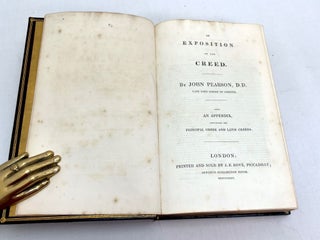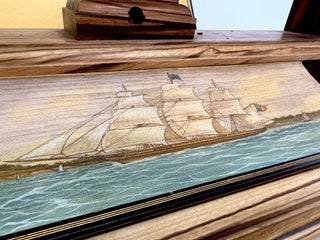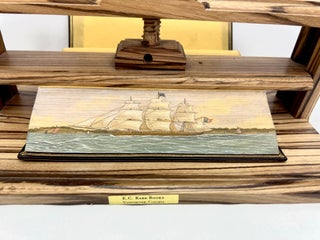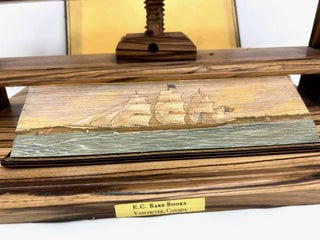AN EXPOSITION OF THE CREED;
Printed and Sold by J. F. Dove, 1832, 1832. Full Morocco. [FORE-EDGE PAINTING]
AN EXPOSITION OF THE CREED
A new edition. Edited by the Rev. C. Bradley ... With a biographical sketch of the author, and a list of his works
John PEARSON (Bishop of Chester.)
Printed and Sold by J. F. Dove, 1832
An Exposition of the Creed 616 pages, was a work by John Pearson which was first published in 1659. It was based on sermons he delivered at St Clement's, Eastcheap. It was one of the most influential works on the Apostles' Creed in the Anglican Church. Bound in full maroon straight grain Morocco, extra gilt on the covers, and spine with a Portcullis emblem on the spine and rear board, book plate of Edward Thomas King on the rear pastedown (upside down). A wonderful copy with clean text. Excellent Condition
The Apostles' Creed (Latin: Symbolum Apostolorum or Symbolum Apostolicum), sometimes titled the Apostolic Creed or the Symbol of the Apostles, is a Christian creed or "symbol of faith". The creed most likely originated in 5th-century Gaul as a development of the Old Roman Symbol, the old Latin creed of the 4th century. It has been in liturgical use in the Latin rite since the 8th century and, by extension, in the various modern branches of Western Christianity, including the modern liturgy and catechesis of the Catholic Church, Lutheranism, Anglicanism, Presbyterianism, Moravianism, Methodism, and Congregational churches.
FORE-EDGE PAINTING
of the Whaling Ship Samuel Enderby
Samuel Enderby (17 January 1719 – 19 September 1797) was an English whale oil merchant, significant in the history of whaling in the United Kingdom. In the 18th century, he founded Samuel Enderby & Sons, a prominent shipping, whaling, and sealing company.
The Enderby family had been tanners (leather workers) at Bermondsey, and supported Oliver Cromwell. Daniel Enderby, I raised money for the army in the Long Parliament, as recorded in Hansard. The family was granted forfeited estates at Lismore, County Waterford, Ireland, which were sold in 1660. After that time, the family was active in the 'oil and Russia trade' and traded with the New England colonies.
On 2 June 1752, Samuel Enderby II married Mary Buxton, a daughter of his business partner, at St Paul's Wharf in London. Enderby died in 1797, leaving the company to his three sons Charles, Samuel III, and George.
Samuel Enderby III (1755-1829) owned Britannia; the ship that made the first successful whale catch off Australia (10 November 1791). He was the grandfather of Major-General Charles George Gordon.
Fictional references
In Chapter 100 of the novel Moby-Dick, the Pequod of Nantucket meets a whaling ship of London named the Samuel Enderby, which has also encountered the White Whale. The Samuel Enderby was a real ship, which was in fact among the three Enderby company ships (the other two were the Fancy and the Brisk) from England that arrived at Port Ross in 1849 carrying the 150 colonists for the new Enderby Settlement. Chapter 101 of Moby Dick discusses Samuel Enderby & Sons whaling company in further detail. Very Good. Item #496
Price (USD): $1,275.00






